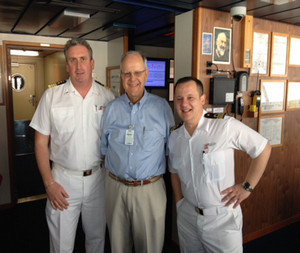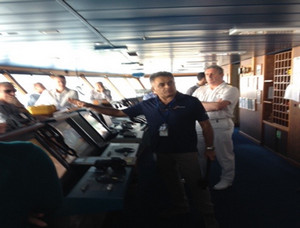 On December 16-18, 2015, I was able to attend the Cruise Line International Association Safety Conference in Miami. The focus was on improving the safety culture and Bridge Resource Management. This is a very interesting business for me to learn about. I was there to give some perspective from the chemical industry.
On December 16-18, 2015, I was able to attend the Cruise Line International Association Safety Conference in Miami. The focus was on improving the safety culture and Bridge Resource Management. This is a very interesting business for me to learn about. I was there to give some perspective from the chemical industry.
This cruise line industry is doing a lot to keep improving their safety performance. Their safety challenges range from slips, trips and falls all the way to navigation, building effective teams on the bridge and crew communications challenges. Ken Koves from the Institute of Nuclear Power Operations spoke about safety culture from their perspective. The level of regulation in that industry is quite impressive. There is just no question about doing things safely, yet they still have their challenges.
I spoke about moving towards a stronger safety culture by sharing more information, building trust and helping people to see the importance of their work to the success of the whole effort. I showed the 35 attendees a slide about the layers of the safety process effort, which they found quite interesting. I also gave them some cards with tips that the officers at different levels could use to help them when they go out to talk with their people. These were seen as quite helpful as well.
The second day focused on training, bridge resource management and simulation so that the captains and their bridge officers could develop stronger skills relating to navigation, ship piloting and management skills.
There is some very sophisticated work being done with large simulators being used by several companies. There are also several institutes providing skills, refresher training and qualification for the officers. Their training loads are very heavy.
Two test pilots from Boeing spoke about their training and the use of simulators. Their simulators are so advanced that, after a month of simulator training, a person could fly an airplane even though they never had seen it before. The basic ideas about the way simulators help them are quite alike even though the differences between a single seat jet fighter and a cruise ship are huge.
Part 2 – Integrating this Learning into all Safety Leadership
 There is a big need to be sure the managers of chemical plants are qualified so that their employees and neighboring communities do not suffer the consequences of chemical releases and spills. Many manufacturing businesses that do hazardous work, aside from chemical manufacturing, should heed this thinking too.
There is a big need to be sure the managers of chemical plants are qualified so that their employees and neighboring communities do not suffer the consequences of chemical releases and spills. Many manufacturing businesses that do hazardous work, aside from chemical manufacturing, should heed this thinking too.
As I was listening to these talks, I got to thinking about my chemical industry experiences. When I was a DuPont Plant Manager 20 years ago, we were very strong in operating discipline and safety. Managers were carefully selected and a lot of attention was paid to doing safety and everything else right. Training and integrating safety into every task, every day, was paramount.
Over the years, since I retired in 1996, a lot has changed, with the terrific pressure on cost control and efficiency. The safety standards fell terribly and accidents occurred like the four LaPorte, Texas deaths that DuPont had in October, 2014. In reading the reports of that accident it was sad to see that standards had slipped so far that even their company fire truck broke down on the way to respond to the incident.
This isn’t just a DuPont problem. Many companies are being broken up and purchased by finance and fund managers who know nothing about manufacturing and the high standards that need to be met. Just look at the First Chemical Company spill in West Virginia, when their poorly maintained storage tanks failed, spilling chemicals into the Elk River near Charleston shutting down the city water system for weeks. The people who owned this facility had no idea about their safety responsibilities. Their tanks were leaking for some time, yet the owners ignored them; the size of the leaks increased over a considerable period of time, then the dikes finally failed.
I am beginning to think that the people who manage facilities using highly hazardous materials, like those on the TSCA list, should have some sort of licensing requirements to certify that they are qualified and that their companies know how to fulfill their safety responsibilities. Ship Masters have licenses and certifications. Nuclear plant people are certified. My barber has to have a license. Professional Engineers must be licensed.
While this may sound like just more red tape, I think it is time to open the conversation about this. Plants that handle chemicals like chlorine are hard to run, can fall into a backwater and not receive the attention and support they need – yet a big chlorine spill would be a disaster.
There are lots of questions related to getting this going, but we, as a society, need to address it. What are your thoughts? What areas in your specific business, (chemical or not), are such that being certain that your managers and owners know what they’re doing and have the required knowledge and demonstrated operating discipline, are paramount? Where do you need to put some marked attention in 2016?






Speak Your Mind